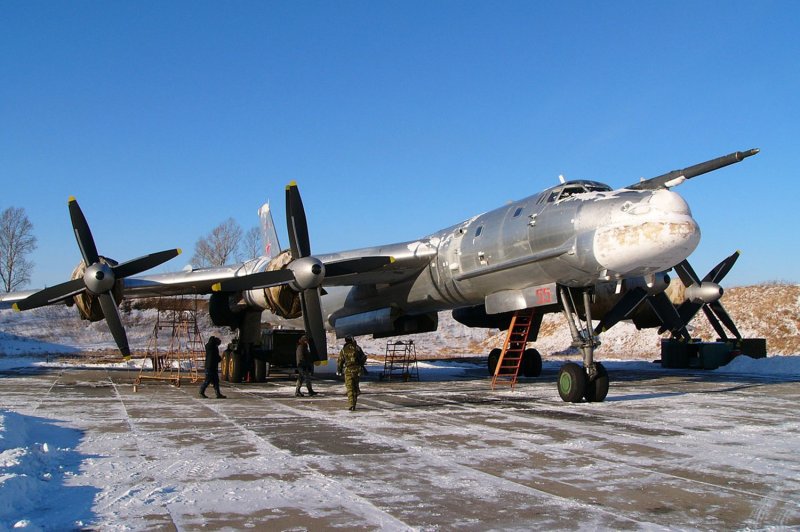Two Russian Tu-95 Bear bombers reportedly intruded on a U.S. defense airspace zone west of Alaska on April 22, 2015. In 2014, U.S. jets intercepted Russian military aircraft in ADIZ zones on at least six occasions. File Photo: UPI Photo/Russian Air Force |
License Photo
JUNEAU, Alaska, May 1 (UPI) -- Two Russian military bombers, which are capable of delivering nuclear warheads, flew into a U.S. air defense zone near Alaska last week, a Washington news website reported Friday.
A pair of Tu-95 Bear H bombers reportedly flew into the airspace on April 22 -- perhaps a sign, officials said, that Russia has begun its long-range aviation spring training cycle.
U.S. defense officials have not yet confirmed the incursion but did tell the Washington Free Beacon that no American fighter jets were dispatched near Alaska last week to monitor any invading aircraft, which would typically be standard procedure.
Three weeks ago, a Russian jet intercepted a US RC-135 reconnaissance plane over the Baltic Sea, something that the Pentagon described as "unsafe" and "unprofessional". Russian defense officials denied any wrongdoing on the part of the Russian jet, claiming the US plane had been "steadily moving towards the Russian state border."
Some analysts see the flights of Russian military aircraft into air defense zones as mere saber rattling by Moscow, which has raised international tensions in recent years with a steady stream of anti-U.S. rhetoric and its annexation of Crimea last year.
If true, the Russian intrusion would mark the first of its kind in U.S. or Canadian zones this year. Several similar incidents have been recorded in the past. Last year alone, U.S. fighter jets intercepted Russian aircraft at least six times.
In September, U.S. defense forces intercepted six Russian military aircraft -- two refueling tankers, two Mig-31 fighter jets and two long-range Bear bombers -- in the air defense identification zone (ADIZ) west of the Alaskan coast.
In June, four Russian bombers flew within 50 miles of the California coast.
An intrusion of the ADIZ, however, isn't a violation of international law since the zones are not considered sovereign airspace. Aircraft flying in the ADIZ, though, are required to identify themselves and their location.
Further flights into the ADIZ near the U.S. coast are expected, a defense official reportedly said.
The purpose of Russian flights near the U.S. isn't clear, but analysts believe they could signal a number of things -- such as the flexing Moscow's military, patrolling the area or testing U.S. defenses.
"They're obviously messaging us," Air Force Col. Frank Flores, who is in charge of 14 radar stations along the Alaskan coast, told the Los Angeles Times earlier this month. "We still don't know their intent."















